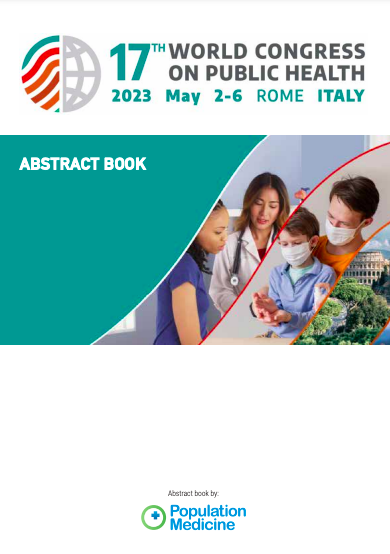Have public health responses to COVID-19 considered social inequalities in health? Insights from Brazil, Canada, France & Mali
17th World Congress on Public Health : Rome, Italy
Vol. 5/ Special Issue Supplement | 590 p.
ABSTRACT
Background: Research has indicated an increased risk of self-harm repetition and suicide among individuals with frequent self-harm episodes. Co-occurring physical and mental illness further increases the risk of self-harm and suicide. However, the association between this co-occurrence and frequent self-harm episodes is not well understood. We examined the profile of individuals with frequent self-harm episodes and the association between physical and mental illness comorbidity, self-harm repetition and highly lethal self-harm acts. Methods: The study included consecutive patients with five or more self-harm presentations to Emergency Departments across three general hospitals in the Republic of Ireland. The study included file reviews (n=183) and semi-structured interviews (n=36). Multivariate logistic regression models were used to test the association between the sociodemographic and the comorbidity variables on highly lethal self-harm acts. Thematic analysis was applied to identify themes related to the comorbidity and frequent self-harm repetition. Findings: Most of the participants were female (59.6%), single (56.1%) and unemployed (57.4%). The predominant current self-harm method was drug overdose (60%). Almost 90 % of the participants had history of a mental or behavioural disorder, and 56.8% had recent physical illness. The most common psychiatric diagnoses were alcohol use disorders (51.1%), borderline personality disorder (44.0%), and major depressive disorder (37.8%). Male gender (OR=2.89) and alcohol abuse (OR=2.64) were associated with highly lethal self-harm acts. Major qualitative themes were a) the functional meaning of self-harm b) self-harm comorbidity c) family psychiatric history and d) contacts with mental health services. Participants described experiencing an uncontrollable self-harm urge, and self-harm was referred to as a way to get relief from emotional pain or self-punishment to cope with anger and stressors. Conclusions: Physical and mental illness comorbidity was high among the participants. The mental and physical illness comorbidity of these patients should be addressed via a biopsychosocial assessment and subsequent interventions.
Members and SHERPA Teams

Lara Gautier
Professor, Département de Gestion, d’Évaluation et de Politique de Santé, École de Santé Publique, Université de Montréal

